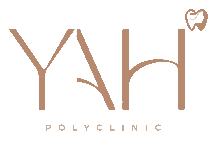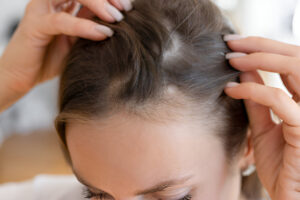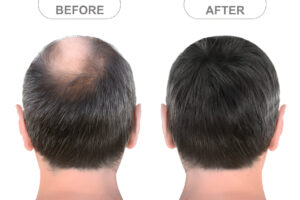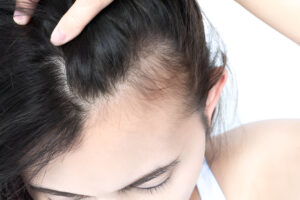Wisdom teeth removal is a common dental procedure, but many people are unsure about what they can eat afterward. The right diet can help you heal faster and avoid complications like infections or dry sockets. Eating the wrong foods too soon can delay healing and cause pain. This guide will help you understand when and what to eat, what foods to avoid, and how to care for your mouth after surgery. Following these tips will ensure a smooth recovery and help you return to normal eating habits as quickly as possible.
When Can You Eat After Wisdom Teeth Removal?
After your surgery, you should wait at least two hours before eating. Your mouth will still be numb from the anaesthesia, and eating too soon may cause accidental bites or injuries. In the first 24 hours, you should only have liquids or very soft foods to allow the blood clot to form properly over the extraction site. By the second or third day, you can start eating slightly firmer foods, but you should still avoid anything too hard, chewy, or spicy. A full return to a normal diet usually takes about two weeks, depending on how quickly your mouth heals.
Is wisdom teeth removal painful?
Why Is Diet Important After Wisdom Teeth Removal?
Eating the right foods after surgery is crucial for a smooth recovery. Soft and nutritious foods provide essential vitamins and minerals to help your body heal. Foods that require little or no chewing will reduce strain on your jaw and prevent pain. Avoiding certain foods will also lower the risk of complications like dry socket, which occurs when the blood clot is dislodged, exposing the bone and nerves. A proper diet will also prevent infections, as some foods can leave debris in the wound, leading to bacterial growth. Sticking to recommended foods will make the healing process faster and more comfortable.
Best Foods to Eat After Wisdom Teeth Removal
Eating soft, easy-to-chew foods will help you recover without causing irritation to your gums. In the first few days, focus on liquid-based foods that provide nutrients while being gentle on your mouth. Smoothies, soups, and yoghurts are excellent options. As your mouth heals, you can gradually introduce semi-solid foods like mashed potatoes, scrambled eggs, and soft pasta. Avoid using a straw when drinking liquids, as the suction can disturb the blood clot. Drinking plenty of water will also help keep your mouth clean and prevent infections, promoting a faster healing process.
How much is wisdom tooth extraction in Dubai?
Day 1: Liquids and Pureed Foods
For the first 24 hours, stick to liquid and pureed foods to avoid irritation and pain. Blended soups, broths, and smooth yoghurts are ideal because they require no chewing and are easy to swallow. You can also have smoothies, but ensure they don’t contain seeds, as these can get stuck in the wound. Lukewarm mashed bananas and applesauce are good options too. Avoid anything that is too hot, as it can increase swelling and discomfort. Keeping your diet simple during the first day will protect the extraction site and reduce the risk of complications like dry socket.
Days 2-3: Soft Foods with Minimal Chewing
By the second or third day, you can introduce soft foods that require minimal chewing. Scrambled eggs, mashed potatoes, and avocado are nutritious and gentle on the healing gums. Soft pasta, oatmeal, and cottage cheese are also safe to eat. Make sure to chew on the opposite side of your mouth to prevent irritation at the extraction site. Continue drinking plenty of water and avoid fizzy drinks or alcohol. Even though you can eat slightly firmer foods, it’s still important to stay away from anything crunchy or sticky, as they can dislodge the blood clot and delay healing.
Which Composite Filling Is Best?
Days 4-7: Semi-Solid Foods and Gentle Chewing
As your healing progresses, you can start adding semi-solid foods to your diet. Well-cooked vegetables, soft rice, and shredded chicken or fish are good choices. Macaroni and cheese, hummus, and well-cooked beans can also be eaten without causing discomfort. At this stage, you should still avoid foods that are too hard, spicy, or acidic, as they can irritate the wound. Gradually increasing your food variety will help your body get the nutrients it needs while ensuring a smooth healing process. Pay attention to any pain or swelling and adjust your diet if necessary.
After One Week: Returning to Normal Foods
After a week, most people can begin reintroducing normal foods, but this should be done gradually. Soft bread, steamed vegetables, and tender meats can be eaten in small bites. However, continue to avoid crunchy snacks, tough meats, and anything that requires excessive chewing. If you feel pain or discomfort while eating, return to softer foods for a few more days. It’s important to listen to your body and not rush the process. Drinking plenty of water will help keep your mouth clean, and gentle rinsing with saltwater can prevent infections.
Foods to Avoid After Wisdom Teeth Removal
Some foods can slow healing or cause complications if eaten too soon. Crunchy foods like crisps, nuts, and popcorn should be avoided as they can get stuck in the wound. Sticky foods like caramel and chewing gum can also dislodge the blood clot, leading to dry socket. Acidic foods such as citrus fruits and tomatoes can cause irritation and discomfort. Avoid hot drinks, alcohol, and fizzy beverages, as they can increase swelling and pain. Spicy foods should also be avoided, as they can irritate the healing gums. Staying away from these foods will help your mouth heal properly.
How to Eat Safely After Wisdom Teeth Removal
Eating safely is just as important as choosing the right foods. Use a small spoon to take gentle bites and avoid chewing near the extraction site. Try to chew on the opposite side of your mouth to prevent irritation. Swallowing small amounts at a time will reduce strain on your jaw. Drinking plenty of water will help wash away food particles and keep your mouth clean. Avoid using straws, as the suction can dislodge the blood clot. Following these simple steps will make eating more comfortable and help prevent complications during recovery.
Signs of Healing and When to Seek Help
Your mouth should start feeling better within a few days, but full recovery can take up to two weeks. Normal healing includes reduced pain, swelling, and tenderness. If you notice excessive bleeding, severe pain, or signs of infection like fever or pus, contact your dentist immediately. A bad taste or smell from the wound could indicate dry socket, which needs professional treatment. Most people recover without complications, but keeping an eye on your symptoms will ensure any issues are addressed early. Proper aftercare and following a good diet will speed up healing and reduce discomfort.
Tips for a Faster Recovery
Getting enough rest and following a proper diet will speed up healing. Keeping your head elevated while sleeping will help reduce swelling. Applying ice packs in the first 48 hours will also help with pain and inflammation. Take prescribed pain medication as directed and avoid strenuous activities. After 24 hours, gently rinse your mouth with saltwater to keep the area clean. Drink plenty of water, but avoid using straws. Sticking to soft foods and gradually reintroducing normal foods will make the healing process smoother. Taking care of your mouth properly will ensure a quicker and more comfortable recovery.
Final Thoughts
Yes, you can eat after wisdom teeth removal, but you need to be mindful of what you eat. Following a proper diet will help you heal faster and prevent complications. Start with liquids and soft foods, then gradually introduce firmer foods as your mouth recovers. Avoid crunchy, spicy, and sticky foods until your gums fully heal. Drink plenty of water and take care of your oral hygiene to prevent infections. If you experience severe pain or unusual symptoms, contact your dentist. By following these guidelines, you’ll be back to your normal diet in no time.
Book Your Post-Surgery Checkup at YAH Polyclinic
At YAH Polyclinic, we provide expert post-surgery care to ensure a smooth and comfortable recovery. Our experienced dental professionals are here to guide you through the healing process and address any concerns. If you need advice on your diet or aftercare, book an appointment today for personalised support. Call us now!
FAQs About Eating After Wisdom Teeth Removal
Can I eat spicy food after wisdom teeth removal?
No, you should avoid spicy foods for at least a week. Spices can irritate the extraction site and cause pain or discomfort. Stick to mild, soft foods until your gums heal completely. Spicy foods can also increase swelling, which may slow down the healing process.
When can I start eating meat again?
You can start eating soft meats like shredded chicken or fish after four to five days. Avoid tough meats like steak or jerky, as they require heavy chewing. These foods can put pressure on your gums and may cause irritation or discomfort while your mouth is healing.
Can I drink coffee after wisdom teeth removal?
You should avoid coffee for at least 48 hours after surgery. Hot drinks can disturb the blood clot and lead to dry socket. If you must have coffee, drink it lukewarm and avoid using a straw. Too much caffeine can also dehydrate you, which may slow down healing.
What if food gets stuck in the extraction site?
If food gets stuck, rinse gently with warm saltwater. Avoid using a toothpick or your fingers to remove it, as this can cause irritation. You can also try swishing herbal tea or warm water. If the problem persists, contact your dentist for professional advice.
How long should I wait before eating normally again?
Most people can return to their normal diet after two weeks. However, recovery times vary. Start with soft foods and gradually reintroduce firmer textures. Listen to your body—if chewing causes pain or discomfort, stick to soft foods for a few more days before trying harder foods.





